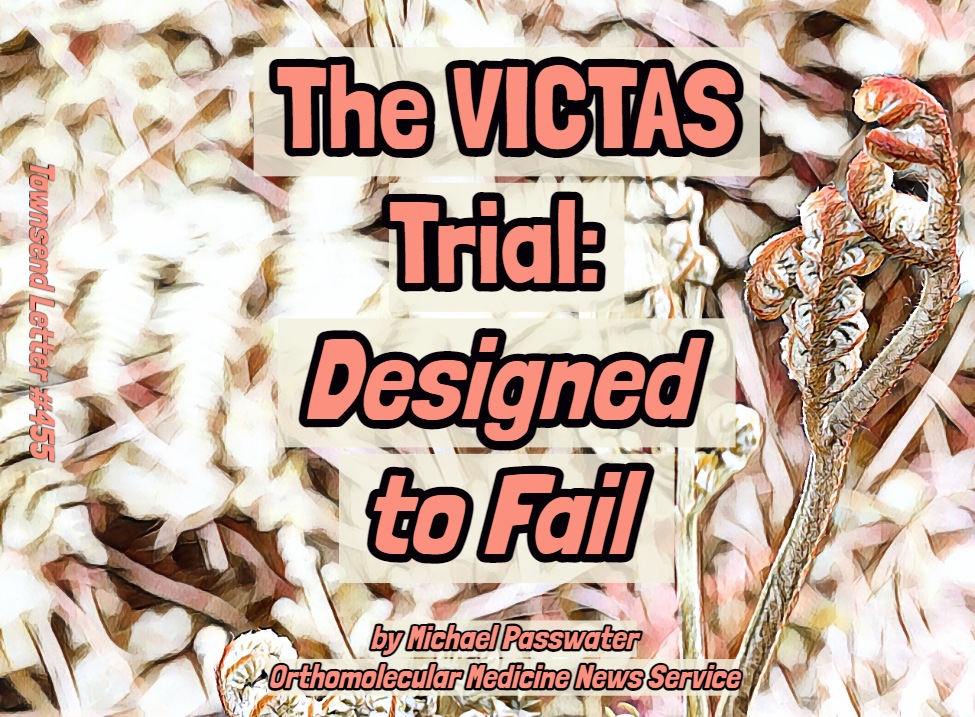#455
Chronic Low Back Pain and Gluten
A retrospective case report of 110 patients, from a rheumatology clinic in Spain, indicates that a gluten-free diet is beneficial for some patients who have chronic, unmanageable low back pain (mean duration=15 years; SD 9.2 years). The rheumatology clinic, which is part of a university hospital, includes a unit that focuses on gluten sensitivity. The patients had clinical signs of spondyloarthritis (inflammation of spine and/or joints) but no clear cause for their severe pain (eg, fracture, tumor, infection). Authors Carlos Isasi and colleagues state that spondyloarthritis is associated with inflammatory bowel disease and non-specific gut inflammation.
For this report, patient records were selected from the unit’s database. Patients with severe, chronic low back pain who followed a gluten-free diet (GFD) for at least four months were included in the study. Some patients also had a diagnosis of fibromyalgia, depression, or disc pathology. The strict diet followed guidelines from the Association of Celiac and Gluten-Sensitivity of Madrid. Patients also received vitamin and mineral supplements (unspecified) and were encouraged to restrict or eliminate dairy food. All patients were negative for celiac disease, according to testing (anti-transglutaminase, anti-deamidated gliadin peptide) performed before starting the diet. In addition to collecting data from patient records, the researchers contacted each patient by phone and used a structured questionnaire to assess the patient’s clinical status and to fill gaps in the medical record.
Out of the 110 patients, 69 (62%) showed “demanding improvement”: they reported significant relief in the low back pain plus at least one of the following: ability to return to normal life and/or work, discontinuation of opioids, >50% reduction of analgesic drugs, or pain remission (totally asymptomatic or only occasional non-severe pain). Fifty-six of this group reported eating gluten at some point; all but two of them said that their symptoms worsened with gluten.
Eighteen patients (16%) reported partial improvement on GFD; both pain and digestive symptoms had improved—but not to the point that it changed medication or their ability to function. Twenty-three patients (21%) showed no improvement after following the GFD for at least four months.
Patients with fibromyalgia were less likely to experience a benefit: “78% of 27 without fibromyalgia diagnosis reached demanding improvement versus 57% of 83 patients who had been diagnosed with fibromyalgia.” Those who reported demanding improvement followed the GFD longest (median duration time 60 months). Median duration time for those reporting partial improvement was 24 months, and for those with no improvement median duration was 18 months. (Was the diet more effective with longer adherence, or did patients adhere to the diet for a longer time because it was effective? The article doesn’t say.)
Because the diet’s effects can take months to become apparent, the researchers looked at several variables in the hope of identifying which patients were most likely to respond to GFD. Variables included presence of genetic susceptibility for celiac disease, signs of autoimmunity, nutritional deficiency, and previous GI disorders. When looking at data from patients with demanding improvement, the researchers found statistically significant associations to oral aphthosis (mouth ulcers or canker sores; OR 12.06: 95%CI 3.97-36.58) and to having a relative with celiac disease (OR 7.90: 95%CI 1.01-62.02). Patients with the greatest response to GFD were also more likely to show evidence of malabsorption of ferritin, copper, and zinc (OR 5.93: 95%CI 1.28-27.51). Neither genetic typing nor duodenal biopsy results had a statistically significant association with demanding improvement to GFD. However, the authors point out, “The statistical analysis of potentially predictive variables is limited by the sample size and small number of patients who did not experience improvement.”
Controlled, prospective studies are needed to test whether non-celiac gluten sensitivity is associated with chronic low back pain related to spondyloarthritis, say the authors: “This study is not intended to convey that 62% of patients having a GFD recommended are going to experience a significant improvement, but it describes a clinically significant improvement in a selected group of patients….” This report does, however, support the observation that specific foods can cause joint pain—as Hal S. Blatman, MD, described in his Townsend Letter article “The Truth About Pain” (November 2018 and online).
Isasi C, et al. Non-celiac gluten sensitivity and chronic refractory low back pain with spondyloarthritis features. Medical Hypotheses. 2020;140:109646.
Vitamin C and Hemodialysis
Several studies have looked at benefits and risks of vitamin C (ascorbic acid) supplementation for patients with end-stage kidney disease who receive hemodialysis (HD). As Patrick Chaghouri and colleagues explain in their 2021 review article, vitamin C deficiency is common in HD patients. The HD process removes nutrients, including ascorbic acid (AA), along with uremic, water-soluble toxins from the bloodstream. In addition, kidney patients need to restrict their consumption of high-potassium fruits and vegetables, foods that may also contain ascorbic acid. One study found that “hemodialysis patients compared with healthy subjects have a fourfold smaller mean of AA concentration in serum collected before the dialysis procedure, which was 12 μmol/L.” Another study reported a mean concentration of 9 μmol/L in HD patients; AA deficiency is defined as <15 μmol/L.
The potential negative effects of AA deficiency are heightened by an increased need for antioxidants; chronic kidney disease and the process of HD itself produce increased oxidative stress and inflammation. Uremia, characteristic of kidney disease, causes metabolic changes, including mitochondrial dysfunction and overproduction of reactive oxygen species (ROS). Hemodialysis stimulates inflammation and immune response as leukocytes, thrombocytes, and plasma repeatedly contact the hemodialysis membrane, which is foreign to the body; “the higher the dose of dialysis, the stronger inflammation and oxidative stress can occur.” HD patients usually have higher serum concentrations of the inflammatory marker C-reactive protein (CRP). In addition, intravenous iron, used to treat anemia, also increases ROS production. Increased oxidative stress is a major contributing factor to cardiovascular disease, the leading cause of death among kidney patients: “…patients with AA concentration in plasma lower than 32 μmol/L were at almost a fourfold higher risk for major cardiovascular events and cardiovascular mortality compared to patients with AA concentration in plasma exceeding 60 μmol/L” [Deicher et al. J Am Soc Nephrol. 2005;16:1811-1818].
Several studies have investigated supplementation to increase AA levels in HD patients. Oral doses of 750 mg per week increased AA plasma concentration to normal range, without safety concerns. C-reactive protein levels decreased (16.8±27.9 to 10.8±25.4 mg/L) in patients receiving AA (250 mg three times/week), while CRP increased in patients who received a placebo or no intervention. Intravenous doses of 500-900 mg/week also raise AA levels, but IV supplementation has been linked to oxalate formation in HD patients. “The fact of exceeding saturation level brings a risk of oxalate deposition in tissues, mainly vessels, and bones,” the authors write. “Paradoxically, such a result of vitamin C overdosage would possibly precipitate the occurrence of cardiovascular diseases instead of preventing them.” Oral supplementation is less likely to have this effect. In addition to oxalate formation, intravenous AA has a pro-oxidant effect when given with intravenous iron. When infused together, F2-isoprostane (a marker of oxidative stress related to inflammation and lipid peroxidation) increased along with an increase in the inflammatory markers interleukins 1 and 10 and tumor necrosis factor-α. The increase in these biomarkers did not occur when iron was administered on its own.
Chaghouri et al acknowledge that vitamin C supplementation for HD patients is still debatable. They conclude: “A physician…should take into consideration: concentration of AA in plasma and its relation to the reference values, the concentration of ferritin in serum, which is better to be lower than 500 μg/L, avoidance of simultaneous iron infusion, route of AA administration with the preference of enteral one, and avoidance of repeated large doses.”
Chaghouri P, et al. Two Faces of Vitamin C in Hemodialysis Patients: Relation to Oxidative Stress and Inflammation. Nutrients. 2021.
Microbiota Transplantation for Liver Diseases
Researchers are investigating fecal microbiota transplantation (FMT) as a possible adjunctive treatment for chronic liver disease. FMT, which FDA considers a drug and a biologic, is a standard-of-care treatment for recurrent Clostridium difficile infection, but its use in other conditions is experimental. Because worsening dysbiosis and changes in the microbiome are associated with liver disease severity, researchers hope to use FMT to modify the gut-liver-brain axis to slow or prevent progression to cirrhosis (end-stage liver disease) and the cognitive impairment of hepatic encephalopathy. Jasmohan S. Bajaj and Alexander Khoruts explain that “changes in liver disease-associated intestinal microbiota are driven by a multitude of host factors, including decreased bile acid production, altered mucosal biology, changed xenobiotic metabolism, different diet [and alcohol use], and various therapeutics that include antibiotics.” Several therapies for liver disease target the GI microbiome: probiotics and prebiotics, bile acid/FGF analogs, antibiotics, laxatives, as well as FMT.
Bajaj and Khoruts prefer to use the term “intestinal microbiota transplantation” as the procedure now involves standardized, cryopreserved preparations. Delivery technologies to contend with variable GI transit times and medication use are still being developed. People with liver disease are often taking medications that impact the microbiota, including multiple courses of antibiotics that make them vulnerable to recurrent C. difficile (rCDI) infections. Dosing requirements for liver disease are also unknown. Patients with cirrhosis who received FMT to treat rCDI were more likely, than non-cirrhotic patients, to need multiple FMT treatments.
Many FMT liver studies focus on hepatic encephalopathy (HE). A 2019 study, led by Jasmohan S. Baja, looked at long-term effects of FMT in 10 recurrent HE patients who took part in a 2017 safety trial. In the 2017 randomized, controlled trial, the treatment group underwent five days of pre-FMT antibiotics (to promote microbial engraftment), followed by 90 ml (27 grams) of donor material administered via enema. The control group received standard of care (SOC). All participants were on lactulose, rifaximin, and proton pump inhibitors. For the 2019 study, seven patients were followed for at least 12 and up to 15 months. (Two in the standard of care group were excluded; one died and one had a liver transplant. And one in the FMT group died.)
During the 12-to-15-month follow up, the SOC group had a higher number of hospitalizations (n=10) than the FMT group (n=1) and more HE events (8 in SOC vs. 0 in FMT). Cognitive function, “which had improved in the FMT arm at Day 20 post-FMT, remained significantly better in the FMT arm compared to SOC….” The small size of this study, of course, is a limitation; and larger controlled trials are needed.
Bajaj JS, Khoruts A. Microbiota changes and intestinal microbiota transplantation in liver diseases and cirrhosis. J Hepatology. 2020;72:1003-1027.
Bajaj JS, et al. Long-term Outcomes After Fecal Microbiota Transplant in Cirrhosis. Gastroenterology. May 2019;156(6):1921-1923.
Jule Klotter













